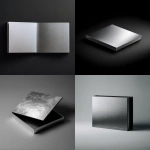Explore the Best AI Image Gallery

Wearable Tech Innovations: Redefining Creativity and Beyond
As technology continues to evolve, wearable tech emerges as a key player in transforming various industries, especially the creative sector. These devices, which can range from smart glasses to e-textiles, are not only enhancing productivity but also inspiring new forms of artistic expression. In this blog post, we explore the impact of wearable tech innovations on creativity, their potential uses, ethical considerations, and future trends that promise to redefine the landscape of art and design.
Impact on the Creative Industry
The integration of wearable technology in the creative industry has been nothing short of revolutionary. Artists and designers utilize these devices to push the boundaries of imagination and expression. Wearables allow creatives to interact with their work in unprecedented ways, using gestures, movements, or voice commands to manipulate digital environments seamlessly.
Take, for instance, the use of augmented reality (AR) glasses. Artists can overlay digital art onto real-world settings, providing viewers with an immersive experience that was once the stuff of science fiction. This not only expands the canvas for artistic expression but also creates interactive environments where audience participation is encouraged. Similarly, wearable haptics allow artists to create tactile experiences, enabling users to feel vibrations corresponding to visual art, thus merging senses in a unique experience.
Potential Uses of Wearable Tech in Creativity
The potential applications of wearable tech in the creative field are vast:
- Interactive Installations: Artists can design installations where wearables trigger changes in the environment based on user movements or interactions, making the audience a part of the artwork.
- Performance Art: Dancers and performers can wear motion-tracking devices that modify audio-visual elements in real-time, blending movement with technology to create dynamic performances.
- Smart Clothing: E-textiles embedded with sensors can change colors or patterns in response to the wearer's emotions or even the environment, offering artists a canvas that adapts with them.
- Education and Workshops: Learning experiences can be enhanced with wearable tech that allows students to interact with digital tools and environments, fostering a new generation of artists comfortable with technology.
Ethical Considerations
As with any technological advancement, the rise of wearable tech in the creative industry raises several ethical considerations. Privacy concerns stand at the forefront. Devices that track user movements or environments might inadvertently collect sensitive data. Artists and designers must prioritize transparency about how data is used and implement stringent privacy measures.
Additionally, there’s the challenge of accessibility. While wearable tech has the potential to democratize creation, the high costs of advanced technology might limit its access to certain demographics. Ensuring that all aspiring artists, regardless of economic background, can utilize these innovations is crucial for a truly inclusive creative landscape.
Future Trends in Wearable Tech for Creativity
The future of wearable tech innovations in the creative industry appears bright, with several trends emerging:
- Increased Collaboration: As technology advances, cross-disciplinary collaborations among artists, designers, and tech developers will become more common, leading to groundbreaking projects that merge creativity with innovation.
- Sustainability: The growing concern over environmental impact will drive the development of eco-friendly wearable tech, with artists finding new ways to incorporate sustainable practices into their work.
- Improved Personalization: Future wearables will be more personalized, catering to individual preferences and styles, offering artists the tools they need to express their unique identities.
- Integration with AI: The combination of wearables with AI technologies can lead to even more innovative creative processes, where machines assist artists in generating ideas, modifying designs, or even creating artwork autonomously.
As we explore the impact of wearable tech innovations on the creative industry, it becomes clear that we are only scratching the surface of what these technologies can achieve. From enhancing artistic expression to igniting new forms of interaction, wearable tech will continue to redefine creativity in ways we can't yet fully imagine. As artists embrace these tools, they must also navigate the ethical implications and ensure that the future of creativity remains inclusive and sustainable. The journey is just beginning, and the possibilities are endless.
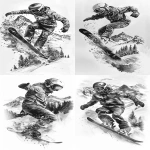



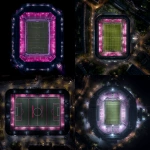
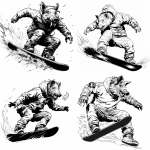

](https://images.ai-img.art/thumbnails/150/3ccc82ef0ad0cc1ab1dfb5b8e6bc37924fcad45dadf41cbd1cb21d19fc7f640a.webp)

](https://images.ai-img.art/thumbnails/150/807ac97f95d56e8cc7cf714e13299d80bf6bcb5b4d80b77a7f06f30246184943.webp)

](https://images.ai-img.art/thumbnails/150/83ec831b9fb19e0db5a520b051b9556f3f594b87acc957ffee094a06a565e6f0.webp)
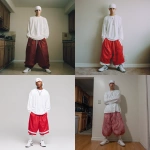
](https://images.ai-img.art/thumbnails/150/fc468fe14407b96489933a55227127071fd5f6c0505be74ca4dcb2f1e2fa3771.webp)






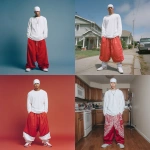

](https://images.ai-img.art/thumbnails/150/69d81ae5ecde297f3c11da78435c5fc00fbac7b00e2c7ccd89d7bbeb014e0541.webp)
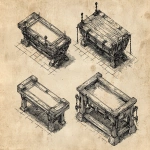
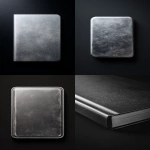


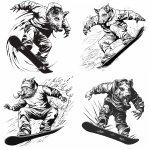
](https://images.ai-img.art/thumbnails/150/57afc09cc38edf73880f760b7ebe1852c5522c6b4051836717b2e56b6f7f913c.webp)
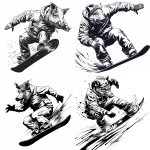







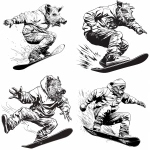
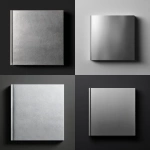



](https://images.ai-img.art/thumbnails/150/05b3252b3f681226a3df9027b069db31c005f91b72257a74367c4102f03a2ba0.webp)
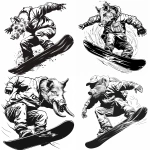
](https://images.ai-img.art/thumbnails/150/738b292720ee21b57673dfb75ad851f4c34d16f5006ae3027ba685feaddb6b04.webp)
](https://images.ai-img.art/thumbnails/150/908bcb9950a44fd4b37d1a84cf00178988cea9507738d7ad4f92707c692461ef.webp)
